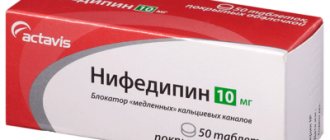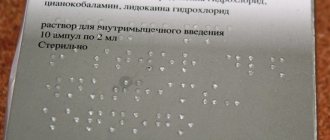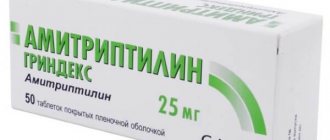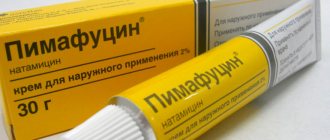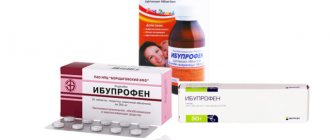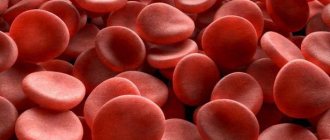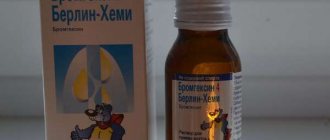A runny nose of allergic origin is a fairly common occurrence. It is almost impossible to get rid of it completely, so people are looking for more and more new means to combat this pathological process.
The chronic form of allergic rhinitis is most aggravated in women during pregnancy. One of the effective remedies for a runny nose is the hormonal drug Nasonex. Let's look at how and when it can be taken during such an important period.
Medicine "Nasonex" during pregnancy
Is it possible to use this drug while pregnant? If we talk about self-treatment, then certainly not. Such drugs should be prescribed exclusively by specialists. In this case, an individual dosage regimen and dosage are always selected.
Studies have shown that the drug “Nasonex” is not absorbed into the blood at all during pregnancy and in its absence. This rule is observed even after the maximum dose of the drug has been administered. Based on this, we can conclude that the medication is not able to penetrate the placental barrier and in any way affect the child.
What is Nasonex?
Nasonex is a hormonal nasal spray produced in Belgium . The main component that determines the effect of the drug is mometasone, a hormonal substance that has a number of effects:
- reduction of allergy symptoms;
- weakening and reducing inflammation;
- reduction in the amount of mucus secreted.
Thus, Nasonex allows you to significantly improve your well-being and makes it possible to breathe freely through your nose. Its effect can be noticed within 12 hours after the first use - and this is a big plus, since other hormonal sprays begin to act a day, three or even five after the start of treatment.
Local glucocorticoids are divided into 4 classes: weak, medium strength, strong and very strong. Mometasone belongs to class 3, that is, strong drugs. This means that Nasonex is highly effective and does its job well.
Nasonex is a nasal spray from a pharmaceutical company from Belgium.
Using the spray at different stages of pregnancy
Mometasone, according to the FDA, has a category C - experiments with animals have shown that this substance can adversely affect the development of the fetus, but the effect of the drug on a pregnant woman and her child has not been studied, so its use is permissible if the benefit from treatment for the expectant mother is higher than probable risk for the baby . At the same time, a baby whose mother used Nasonex during pregnancy may have problems with the functioning of the adrenal glands, so he needs to be examined in this direction.
Despite the existing risks, pregnant women sometimes have to resort to Nasonex. The drug is not absorbed into the bloodstream through the mucous membrane, so the likelihood of systemic exposure and effects on the fetus is minimal. There is a risk that some part of the medicine will be swallowed and enter the gastrointestinal tract. But even from the gastrointestinal tract, mometasone penetrates into the blood in small quantities.
Considering that there is still a risk of negative effects on the fetus, experts recommend using the spray only as a last resort. Doctors say that it is better to give preference to safe drugs, for example, try rinsing the nasal passages with sea water (Aqua Maris, Quix, Humer), using Pinosol. Moreover, it is especially undesirable to resort to the help of Nasonex in the first trimester, when the embryo is just forming, and any external influence can unforeseenly affect this process.
How does the medicine work?
This medicinal spray represents the GCS group. Immediately after injection into the nasal cavity, it does not produce an immediate effect. However, in the first 12 hours the patient begins to feel relief. The maximum effect of the drug is achieved approximately on the second day after regular use and following the instructions.
Nasonex treats adenoids quite quickly. However, for this it is necessary to use additional antiviral and antibacterial drugs. The use of antifungal agents is also sometimes required. The composition has a pronounced anti-inflammatory and anti-allergic effect.
Are there any contraindications for expectant mothers?
In some cases, pregnant women are prohibited from using the described medication. Such situations include the following:
- the presence of hypersensitivity to the components of the drug;
- wounds in the nose, including after surgery;
- bacterial, viral and fungal infections (without additional use of appropriate compounds);
- tuberculosis in various forms of manifestation;
- first trimester of pregnancy (no data on treatment during this period).
In one of the above situations, replacement of Nasonex is required. In this case, you should not look for an alternative to the drug on your own. An analogue of Nasonex (cheaper) should be prescribed by a specialist.
Structural and functional analogues
Nasonex has analogues (drugs with the same active ingredient, produced by another manufacturer):
- Mometasone;
- Desrinitis;
- Forinex and others.
But on the pharmacological market you can also find other sprays that contain a different active ingredient, but have the same effect, for example:
- Flixonase;
- Avamis;
- Nasobek;
- Tafen nasal.
Table: hormonal nasal products that a doctor can prescribe for a pregnant woman
| Name | Composition and release form | Contraindications | Prescription during pregnancy | Features of use |
| Flixonase | Nasal spray. The active substance - fluticasone - is a hormonal agent that reduces the manifestations of allergies (swelling, inflammation, discharge). |
| Only the doctor decides whether the drug should be used. This takes into account the ratio of the benefits of its use for the mother and the likelihood of adverse consequences for the fetus. | The effect of treatment reaches its maximum 3-4 days after starting to use the spray. When the required result is achieved, it is recommended to reduce the dosage. |
| Avamis | Increased sensitivity. | Animal studies have shown that fluticasone may cause fetal defects. However, this result is unlikely if a woman uses this drug as a spray into the nose and does not exceed the recommended dosage. Only a doctor can decide whether to use a spray. This takes into account the ratio of the benefits of its use for the mother and the likelihood of adverse consequences for the fetus. | The appearance of the effect is not noticeable immediately, but only 1–8 hours after the first use. The maximum effect of the drug is observed only a few days after the start of therapy. When the required result is achieved, it is recommended to reduce the dosage. | |
| Nasobek | Nasal spray. The active substance, beclomethasone, is a hormonal agent that reduces the manifestations of allergies (swelling, inflammation, discharge). |
| Nasobek should not be used in the first trimester of pregnancy. At later stages, the ratio of the benefits of its use for the mother and the likelihood of adverse effects for the fetus should be taken into account. | The effect of using Nasobek does not appear immediately, but 5–7 days after the start of treatment. After the expected result appears, the dosage of the drug is reduced to a minimum. |
| Tafen nasal | Nasal spray. The active substance, budesonide, is a hormonal agent that reduces the manifestations of allergies (swelling, inflammation, discharge). |
| Only the doctor decides whether the drug should be used. This takes into account the ratio of the benefits of its use for the mother and the likelihood of adverse consequences for the fetus. | To obtain maximum effect, regular use of the drug is necessary. At the beginning of therapy, the maximum permissible dose is recommended, but it is reduced after the desired result is achieved and the symptoms of rhinitis have subsided. |
Photo gallery: what analogues and drugs to replace Nasonex look like
Flixonase is produced in Spain
Avamys is a nasal spray made in the UK.
Nasobek is a nasal spray from an Israeli pharmacological class=»aligncenter» width=»551″ height=»600″[/img] Tafen nasal – a drug from Slovenia
Desrinit - an analogue of Nasonex from the Czech Republic
What can replace the medicine?
Many expectant mothers believe that this drug can be replaced with any vasoconstrictor spray or drops. However, this is not quite true. In some cases, such compositions can help. However, there are patients who need to take exactly the medication described above.
An analogue of Nasonex (cheaper) can be represented by the drugs Tafen, Avamys, and so on. They have the same effect on the human body, but have a different composition. When choosing an analogue, you should take into account contraindications for its use. You should pay particular attention to these points when carrying a child.
About the drug
Allergic reactions can be acquired or congenital, but they always manifest themselves in the same way. Such conditions are accompanied by frequent sneezing and runny nose, sinus congestion or itching sensations, a state of apathy and weakness, general malaise and dizziness. Allergies are usually caused by animal fur or pollen, dust mites or fungi, poplar fluff, bird feathers, etc. Some people experience rhinitis of allergic origin in certain seasons (poplar fluff, pollen of flowering plants), and some patients suffer from similar problems throughout the year (animal hair, mold, etc.).
Rhinitis of allergic origin is diagnosed today in approximately a third of the world's population, and age characteristics or gender do not play a role, because allergies do not show any preferences. It is completely impossible to cope with allergic rhinitis, especially for pregnant patients, because in such a situation the range of approved medications is extremely limited, and most medications are not only prohibited, but dangerous for the fetus and pregnancy.
But such a condition cannot be tolerated either, because a constant feeling of congestion prevents the full supply of oxygen, negatively affecting fetal development. Nasonex is a spray prescribed by doctors for the treatment or prevention of allergic rhinitis or exacerbation of sinusitis, which can be taken by pregnant women, but only as prescribed by a specialist.
This is an anti-inflammatory drug that effectively prevents and eliminates sinusitis, allergic rhinitis and hay fever. In fact, Nasonex belongs to the category of hormonal drugs that have a fairly wide range of action, which is why you cannot prescribe it yourself, especially when bearing a child.
The active basis of Nasonex is mometasone fuorate, and the auxiliary components are glycerin and MCC, polysorbate or citric acid, purified water, etc. The drug is produced in the form of a spray in bottles of 60 or 120 doses. Externally, the solution has a white, opaque tint and the structure of a suspension.
Indications
Nasonex is prescribed for conditions such as:
- Runny nose of allergic origin, seasonal or year-round;
- As a preventive measure against seasonal runny nose of an allergic nature, then it is recommended to apply the spray about a couple of weeks before the expected start of the season (summer fluff or flowering of certain plants);
- At the stages of exacerbations of chronic sinusitis, then the spray is recommended to be used in combination with antibiotic therapy.
Nasonex also helps patients with nasal polyposis, in which nasal breathing difficulties and olfactory disorders are observed.
Method of application: scheme and dosage
What are the doses of Nasonex? It all depends on what the indications for treatment with this drug are for the expectant mother.
If we are talking about allergies, then the drug is used once a day. In this case, you need to spray the product twice into each nostril. When correcting in complex therapy, it is recommended to spray the drug once into both nasal passages twice a day. The interval between administrations should be the same. For the treatment of adenoids, the initial dose of the drug can be increased to four hundred milligrams. This volume can be obtained after four clicks on the sprayer. After relief of the condition, you should immediately reduce the dose. It is recommended to discontinue the medicine gradually.
If we are talking about complex treatment, then in addition to this remedy, the expectant mother needs to use other drops. How to do this correctly? First you need to administer the main medication: an antibiotic or an antiviral drug. After this you should wait one hour. During this time, the medicine will be completely absorbed into the mucous membrane of the sinuses. Next, administer Nasonex and then lie down for a few minutes. This will allow the drug to penetrate deeper into the nasal passages.
Before using the medicine, shake the bottle thoroughly. After this, remove the cap and press the plunger six to eight times. This will ensure uniform dosing of the medication. With one press, one hundred milligrams of suspension enters the human body. If the medicine has not been used for more than two weeks, then before the next use you need to repeat the above procedure and press the piston several times. If the spray hole becomes clogged, it is necessary to rinse it with water. Do not insert sharp objects into it in an attempt to pierce it.
Pregnancy and allergic rhinitis. Instructions for the drug
What a wonderful time it is - nine months of waiting for a baby. Expectant mothers are happy, cheerful, preparing for dramatic changes in life. The only thing that can upset their condition is illness. After all, you can’t, as before, take the first medicine you come across and give up.
Now you need to study the instructions for the drug, but, in general, it is better to ignore them. After all, no normal mother wants to harm her child.
A difficult question arises for those women who suffer from allergic rhinitis. Indeed, in this case, it is simply impossible to ignore the drugs. Constant nasal congestion does not allow sufficient oxygen to enter the body. And this negatively affects the development and well-being of the baby.
Manifestations of rhinitis are very unpleasant: itching in the nose, which irritates and causes watery eyes, frequent headaches, sneezing, sore throat, reluctance to do anything. In a word, torture. But a pregnant woman needs as many positive emotions as possible, good mood and cheerfulness.
A new generation drug, Nasonex, has come to the rescue in the fight against this disease. It is based on a glucocorticoid - a steroid hormone, which classifies it as a type of corticosteroid allergy medicine.
Nasonex can be used during pregnancy, but it is important to thoroughly study the instructions.
Read the instructions before use
The drug Nasonex is an anti-inflammatory drug in the fight against allergic rhinitis, sinusitis, and is also used as the prevention of hay fever.
The drug is designed for use in certain doses.
One dose - 50 mcg of a white suspension called mometasone furoate - this is the main component.
Its main function is to penetrate the cell membrane, suppress histamine synthesis and reduce vascular permeability. Nasonex also contains: dispersed cellulose BP 65 cps, glycerol, citric acid monohydrate, sodium citrate dihydrate, benzalkonium chloride, polysorbate, purified water and phenylethyl alcohol.
This drug does not have a systemic effect, that is, a small amount of the drug is absorbed into the blood and has a minimum of side effects.
The small amount that reaches the gastrointestinal tract is almost not absorbed through the liver. Excreted in bile or urination. If you use it for a long time, there will be no health risk.
Nasonex is available in a bottle as a nasal spray. There are several types, depending on the number of doses - 60 and 120. The drug is effective for both seasonal allergies and year-round allergies.
The method of application is quite simple. The result appears quickly, in the first 12 hours. The daily dose contains 200 mg, that is, Nasonex is used once a day, 2 injections into each nostril. If after some time the patient notices improvement, the dose can be reduced.
Once and one injection at a time, the dosage is 100 mg. In case the result is not enough, the dose is increased to 400 mg, that is, 4 injections into each nostril once a day.
Be sure to rinse your nose with sea water 15 minutes before injecting Nasonex to rid it of mucus. Before first use, shake the spray thoroughly. Make about 10 test presses until the medicine starts splashing.
The bottle should be held vertically, without turning it over, and the head should be tilted back slightly. The tip should be washed and dried before each use.
After all, it goes completely into the nose and collects all the bacteria. You should not disassemble the spray or pierce the applicator, because this can disrupt the correct dosage contained in it.
Nasonex spray: reviews from doctors
Doctors have only good opinions about this drug. However, doctors claim that the composition has not been fully studied. There is an opinion that the spray can have a negative effect on the female body and reproductive function.
When it comes to pregnant women, doctors try to avoid using this remedy. However, a lot depends on the situation. If the condition of the expectant mother requires the prescription of this drug, then it is prescribed in minimal doses. Doctors say that the lack of correction can have a significantly worse effect on the condition of the unborn baby. In the absence of normal breathing in a pregnant woman, the fetus experiences a lack of oxygen, which is called hypoxia. Often this phenomenon causes some developmental deviations. In more severe cases, the fetus may even die.

